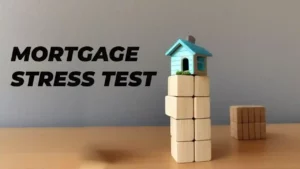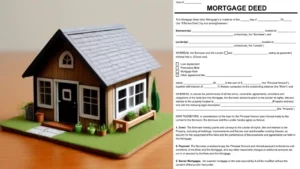Mortgagerateslocal.com – If you are a real estate investor or developer who wants to buy multiple properties at once, you may have heard of a blanket mortgage. A blanket mortgage is a type of loan that covers more than one property under a single mortgage.
This can save you time and money by simplifying the financing process and reducing the closing costs and fees. But what exactly is a blanket mortgage, and how does it work? What are the benefits and drawbacks of using a blanket mortgage? Who should consider getting a blanket mortgage, and who should avoid it?
We will explain everything you need to know about blanket mortgages. Whether you are a seasoned investor or a newbie developer, a blanket mortgage can be a useful tool for your real estate portfolio.
However, a blanket mortgage is not for everyone, and it comes with some challenges and risks. Therefore, it is important to understand the basics of a blanket mortgage before you apply for one.
What Is A Blanket Mortgage?
A blanket mortgage, also known as a blanket loan, is a mortgage that covers two or more pieces of real estate. The real estate is held together as collateral for the loan, but the individual properties can be sold separately without paying off the entire mortgage.
A blanket mortgage can be used to finance the purchase, development, or renovation of multiple properties, such as residential homes, commercial buildings, or land lots. A blanket mortgage is different from a traditional mortgage, which covers only one property.
With a traditional mortgage, you have to apply for a separate loan for each property you want to buy, and you have to pay off the loan in full when you sell the property. This can be time-consuming, costly, and complicated, especially if you are dealing with multiple lenders, interest rates, and terms.
A blanket mortgage simplifies the financing process by consolidating multiple loans into one. With a blanket mortgage, you only have to deal with one lender, one interest rate, and one set of terms. You also only have to pay one monthly payment for all the properties, instead of multiple payments for each loan. This can save you money on closing costs, fees, and interest, and give you more cash flow and flexibility.
Pros And Cons Of A Blanket Mortgage
A blanket mortgage can be a great option for real estate investors and developers who want to buy multiple properties at once. However, a blanket mortgage also has some disadvantages and risks that you should be aware of. Here are some of the pros and cons of a blanket mortgage:
Pros Of A Blanket Mortgage
- Lower closing costs and fees: With a blanket mortgage, you only have to pay one set of closing costs and fees for the entire loan, instead of paying for each loan separately. This can save you thousands of dollars and reduce your upfront expenses.
- Lower interest rate: With a blanket mortgage, you may be able to negotiate a lower interest rate than you would get with multiple loans. This can lower your monthly payment and save you money over the life of the loan.
- More cash flow and leverage: With a blanket mortgage, you can use the equity and income from one property to pay for another property, or to invest in other opportunities. This can increase your cash flow and leverage, and help you grow your portfolio faster.
- More flexibility and convenience: With a blanket mortgage, you can sell or refinance one property without affecting the other properties, as long as you meet the requirements of the release clause. A release clause is a provision in the blanket mortgage that allows you to remove a property from the loan once you pay a certain amount or percentage of the loan balance. This can give you more flexibility and convenience to manage your properties and your loan.
Cons Of A Blanket Mortgage
- Higher down payment and LTV ratio: With a blanket mortgage, you may have to put down a higher down payment than you would with a traditional mortgage. The down payment for a blanket mortgage can range from 10% to 40%, depending on the lender and the type of properties. The loan-to-value (LTV) ratio, which is the percentage of the property value that you borrow, can also be lower than a traditional mortgage. The LTV ratio for a blanket mortgage can range from 50% to 80%, depending on the lender and the type of properties. This means that you may have to borrow less money or buy cheaper properties with a blanket mortgage.
- Higher risk and liability: With a blanket mortgage, all the properties are tied together as collateral for the loan. This means that if you default on the loan or fail to make the payments, the lender can foreclose on all the properties, not just the one that is in default. This can put your entire portfolio at risk and increase your liability. You also have to make sure that all the properties are well-maintained and insured, as any damage or loss can affect the value and security of the loan.
- More difficult to sell or refinance: With a blanket mortgage, you may have more difficulty selling or refinancing one property, as you have to get the approval of the lender and meet the conditions of the release clause. The release clause may require you to pay a certain amount or percentage of the loan balance, or a prepayment penalty, to remove a property from the loan. The lender may also have the right to adjust the interest rate or the terms of the loan after a property is released. This can limit your options and increase your costs when you want to sell or refinance one property.
Types And Features Of A Blanket Mortgage
A blanket mortgage can come in different types and features, depending on the lender and the purpose of the loan. Some of the common types and features of a blanket mortgage are:
Fixed-rate or adjustable-rate
A fixed-rate blanket mortgage has a constant interest rate that does not change throughout the life of the loan. This can give you stability and predictability for your monthly payment and your budget.
An adjustable-rate blanket mortgage has a variable interest rate that can change periodically based on an index and a margin. This can give you flexibility and lower interest rates initially, but also uncertainty and higher interest rates later.
Short-term or long-term
A short-term blanket mortgage has a shorter loan term, usually between one and five years. This can give you lower interest rates and faster payoff, but also higher monthly payments and more pressure to sell or refinance the properties.
A long-term blanket mortgage has a longer loan term, usually between 10 and 30 years. This can give you lower monthly payments and more time to sell or refinance the properties, but also higher interest rates and more interest paid over the life of the loan.
Partial release or full release
A partial release blanket mortgage allows you to release one property from the loan once you pay a certain amount or percentage of the loan balance, or a prepayment penalty. This can give you more flexibility and convenience to sell or refinance one property, but also higher costs and lower equity.
A full release blanket mortgage requires you to pay off the entire loan balance before you can release any property from the loan. This can give you lower costs and higher equity, but also less flexibility and convenience to sell or refinance one property.
Open-end or closed-end
An open-end blanket mortgage allows you to borrow more money from the same loan, up to a certain limit, as you pay down the loan balance. This can give you more access to funds and more opportunities to buy more properties, but also higher risk and liability.
A closed-end blanket mortgage does not allow you to borrow more money from the same loan, once you reach the loan limit. This can give you more security and discipline, but also less access to funds and less opportunities to buy more properties.
How To Qualify For A Blanket Mortgage?
To qualify for a blanket mortgage, you need to meet certain requirements and go through a certain process. The requirements and the process may vary depending on the lender and the type of blanket mortgage, but generally, they include the following:
Credit score and history
You need to have a good credit score and history to qualify for a blanket mortgage, as the lender will evaluate your creditworthiness and your ability to repay the loan. The minimum credit score required for a blanket mortgage can range from 600 to 700, depending on the lender and the type of properties.
You also need to have a clean credit history, with no recent bankruptcies, foreclosures, or defaults. You can check your credit score and report for free from Equifax and TransUnion once a year, or use a free online service, such as Borrowell or Credit Karma, to monitor your credit score and get tips on how to improve it.
Income and debt
You need to have a sufficient and stable income to qualify for a blanket mortgage, as the lender will evaluate your income and your debt-to-income (DTI) ratio. Your income is the amount of money that you earn from your job, your business, or your investments.
Your DTI ratio is the percentage of your monthly income that goes toward paying your debt, such as your mortgage, your credit card, or your car loan. The higher your income and the lower your DTI ratio, the more likely you are to qualify for a blanket mortgage and get a lower interest rate.
The minimum income and the maximum DTI ratio required can vary depending on the lender and the type of properties, but generally, they are around $50,000 and 45%, respectively. You need to provide proof of your income and your debt, such as your pay stubs, your tax returns, your bank statements, and your loan statements.
Down payment and equity
You need to have a large down payment and equity to qualify for a blanket mortgage, as the lender will evaluate your loan-to-value (LTV) ratio and your loan-to-cost (LTC) ratio. Your LTV ratio is the percentage of the property value that you borrow, and your LTC ratio is the percentage of the property cost that you borrow.
The property value is the appraised value of the property, and the property cost is the purchase price plus the development or renovation cost of the property. The lower your LTV and LTC ratios, the more likely you are to qualify for a blanket mortgage and get a lower interest rate.
The minimum down payment and the maximum LTV and LTC ratios required can vary depending on the lender and the type of properties, but generally, they are around 20%, 75%, and 80%, respectively. You need to provide proof of your down payment and your equity, such as your bank statements, your title deeds, and your appraisal reports.
Property type and condition
You need to have a certain type and condition of properties to qualify for a blanket mortgage, as the lender will evaluate the property type and the property condition. The property type is the category of the property, such as residential, commercial, or land.
The property condition is the quality and the state of the property, such as new, existing, or under construction. The type and condition of the properties affect the risk and the value of the loan, and the lender may have different criteria and terms for different types and conditions of properties.
For example, the lender may charge a higher interest rate or require a higher down payment for a commercial property than a residential property, or for a property that is under construction than a property that is existing.
You need to provide information and documents about the type and condition of the properties, such as the address, the description, the purchase contract, the development or renovation plan, and the inspection report.
How To Apply For A Blanket Mortgage
If you want to apply for a blanket mortgage, you need to follow a certain process. The process may vary depending on the lender and the type of blanket mortgage, but generally, it involves the following steps:
1. Find a lender
The first step is to find a lender that offers blanket mortgages and that suits your needs and goals. You can use a mortgage broker, an online platform, or a comparison website, such as nesto, to help you find and compare different lenders.
You can also ask for referrals from your friends, family, or real estate agent, or look for reviews and ratings from other borrowers. You can negotiate with the lender to lower or waive some of the fees, or ask the seller or the lender to pay some or all of them for you.
2. Apply for the loan
The next step is to apply for the loan with the lender of your choice. You can apply for the loan online, by phone, or in person, depending on the lender’s preference and availability. To apply for the loan, you need to provide the lender with some information and documents, such as:
- Your personal information, such as your name, address, phone number, email address, and Social Security number.
- Your income information, such as your pay stubs, W-2 forms, tax returns, bank statements, and other proof of income.
- Your debt information, such as your credit card statements, loan statements, alimony or child support payments, and other proof of debt.
- Your asset information, such as your savings, investments, retirement accounts, and other proof of assets.
- Your property information, such as the address, description, and purchase price of the properties you want to buy or refinance, or the estimated value of the properties you already own.
- Your consent to a credit check, which allows the lender to access your credit report and score from the credit bureaus.
3. Waiting for approval
The lender will review your information and documents and verify your income, assets, debts, and credit history. The lender will also order an appraisal of the properties to determine their value and condition.
The lender will then evaluate your loan application and decide whether to approve or deny it, or to ask for more information or documents. The lender will also determine the interest rate, the fees, and the terms and conditions of the loan.
4. Close the loan
The final step is to close the loan with the lender and the title company. The closing is the final stage of the loan process, where you sign the loan documents, pay the closing costs, and receive the keys to the properties or the funds to your bank account.
The closing can take place at the lender’s office, the title company’s office, the real estate agent’s office, or your home, depending on the preference and availability of the parties involved. The closing can also be done remotely, electronically, or by mail, depending on the state laws and the lender’s policies.
Alternatives And Options For A Blanket Mortgage
If you are not sure if a blanket mortgage is right for you, or if you do not qualify, you may want to consider some alternatives and options, such as:
- Multiple mortgages: Instead of getting a blanket mortgage, you can get multiple mortgages for each property you want to buy or refinance. This can give you more security and flexibility, as you can sell or refinance one property without affecting the other properties, and you can choose different lenders, interest rates, and terms for each loan. However, this can also be more time-consuming, costly, and complicated, as you have to apply for and manage multiple loans, and pay multiple closing costs, fees, and payments.
- Cross-collateralization: Instead of getting a blanket mortgage, you can get a single mortgage for one property and use the other properties as additional collateral for the loan. This can give you more access to funds and lower interest rates, as you can borrow more money or get a higher LTV ratio with the same loan. However, this can also be more risky and restrictive, as you can lose all the properties if you default on the loan, and you cannot sell or refinance any property without paying off the entire loan or getting the lender’s approval.
- Bridge loan: Instead of getting a blanket mortgage, you can get a bridge loan, which is a short-term loan that helps you finance the purchase of a new property before you sell your existing property. This can give you more liquidity and convenience, as you can buy a new property without waiting for your existing property to sell, and you can avoid paying two mortgages at the same time. However, this can also be more expensive and risky, as you have to pay higher interest rates and fees, and you may have to sell your existing property quickly or face the risk of defaulting on the loan.
Conclusion
A blanket mortgage is a type of loan that covers more than one property under a single mortgage. it can be a useful tool for real estate investors and developers who want to buy multiple properties at once, as it can save them time and money by simplifying the financing process and reducing the closing costs and fees.




